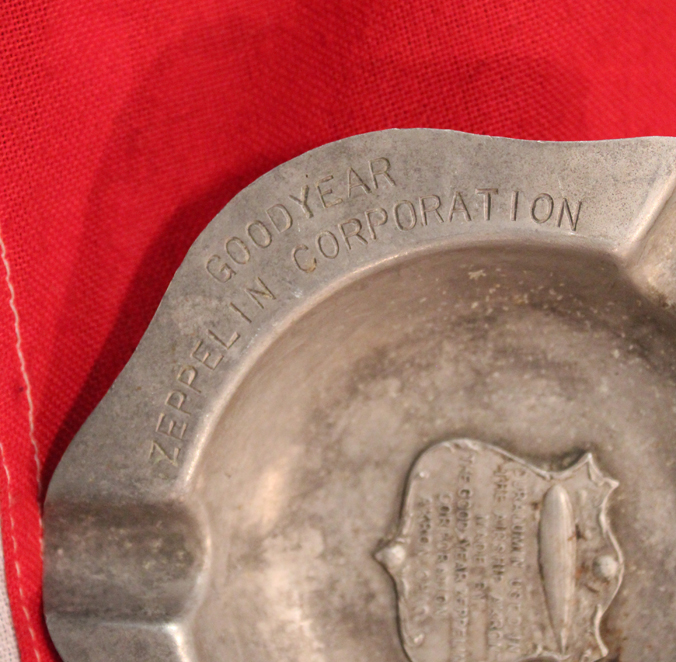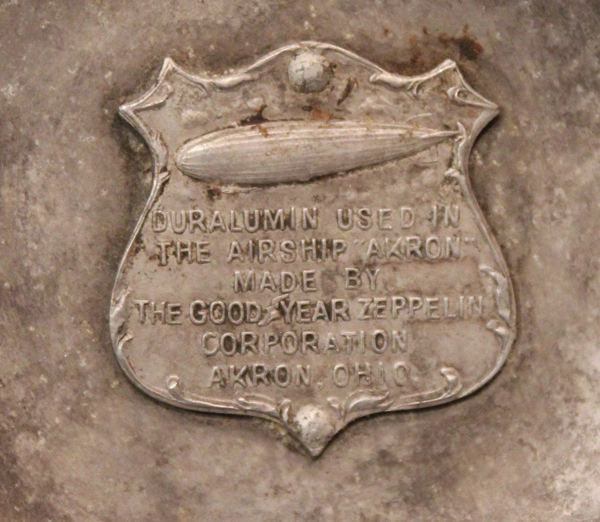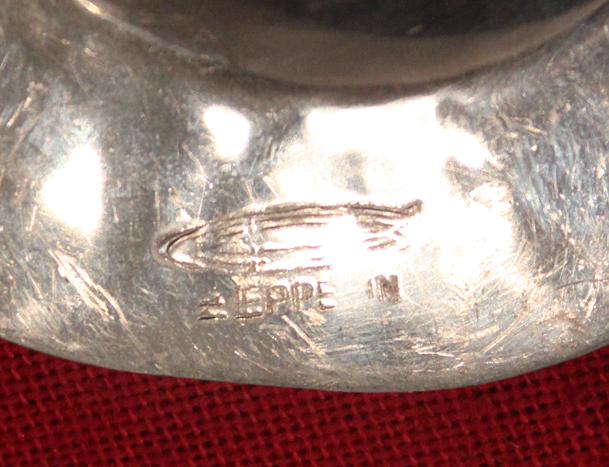An American, Goodyear Co. Ashtray Made From Duralumin From Airship Akron
A 1931 souveninir of USS Akron (ZRS-4). Striking and very rare. It was a helium-filled rigid airship of the U.S. Navy which operated between September 1931 and April 1933. She was the world's first purpose-built flying aircraft carrier, carrying F9C Sparrowhawk fighter planes which could be launched and recovered while she was in flight. With an overall length of 785 ft (239 m), the Akron and her sister ship the Macon were among the largest flying objects ever built. Although the LZ129 Hindenburg and the LZ130 Graf Zeppelin II were some 18 ft (5.5 m) longer and slightly more voluminous, the two German airships were filled with hydrogen, so the US Navy craft still holds the world record for helium-filled airships.
The Akron was destroyed in a thunderstorm off the coast of New Jersey on the morning of 4 April 1933, killing 73 of the 76 crewmen and passengers. This accident involved the greatest loss of life in any airship crash. The airship's skeleton was built of the new lightweight alloy duralumin 17-SRT. The frame introduced several novel features compared with traditional Zeppelin designs. Rather than being single-girder diamond trusses with radial wire bracing, the main rings of the Akron were self-supporting deep frames: triangular Warren trusses 'curled' round to form a ring. Though much heavier than conventional rings, the deep rings promised to be much stronger, a significant attraction to the navy after the in-flight break up of the earlier conventional airships R38/ZR-2 and ZR-1 Shenandoah. The inherent strength of these frames allowed Chief Designer, Dr Karl Arnstein, to dispense with the internal cruciform structure used by Zeppelin to support the fins of their ships. Instead, the fins of the Akron were cantilevered: mounted entirely externally to the main structure. Zeppelin and other rigid designs used a single keel at the lowest point of the hull circumference but Arnstein gave the Akron three keels, one running along the top of the hull and one each side, 45 degrees up from the lower centreline. Each keel provided a walkway running almost the entire length of the ship. The strength of the main rings, the lower keels, and the fact that helium, instead of flammable hydrogen, was to be used, also allowed the designer to mount the engines inside the hull, improving streamlining.
Code: 20454
145.00 GBP








